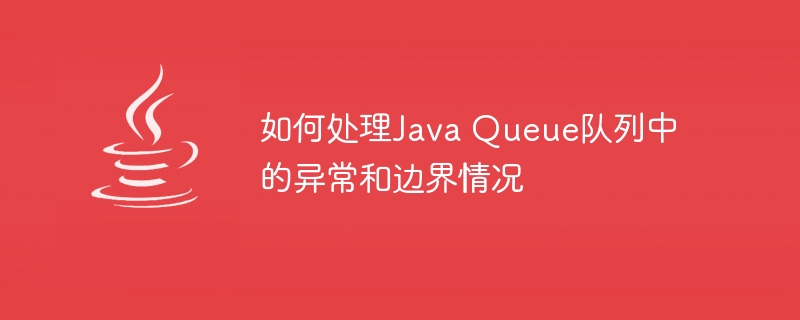

How to handle exceptions and boundary conditions in Java Queue queues requires specific code examples
Overview:
Queue in Java is a commonly used data structure. It follows the first-in-first-out (FIFO) principle for storing elements. When using Queue, we need to pay attention to the handling of exceptions and edge cases to ensure the stability and correctness of the program. This article will introduce some common exceptions and edge cases and provide corresponding code examples to help readers better handle exceptions and edge cases in Java Queue.
Queue<String> queue = new LinkedList<>();
// 获取队首元素
String element = queue.peek();
if (element != null) {
// 进行相应的操作
} else {
// 队列为空,执行其他逻辑
}Queue<String> queue = new LinkedList<>();
// 添加元素
boolean isAdded = queue.offer("element");
if (isAdded) {
// 执行其他逻辑
} else {
// 队列已满,执行其他处理
}Queue<String> queue = new LinkedList<>();
// 使用迭代器遍历队列
Iterator<String> iterator = queue.iterator();
while (iterator.hasNext()) {
String element = iterator.next();
// 进行相应的操作
// 在遍历期间,其他线程对队列进行修改,可以进行相应的处理
}Queue<String> queue = new LinkedList<>();
int capacity = 5;
// 添加元素
boolean isAdded = queue.offer("element");
if (isAdded) {
// 执行其他逻辑
} else {
// 队列已满,执行相应的处理逻辑
// 一种常见的处理方法是删除队首元素再添加新元素
if (queue.size() >= capacity) {
queue.poll(); // 删除队首元素
queue.offer("new element"); // 添加新元素
}
}Summary:
When using Java Queue queue, we need to consider the handling of exceptions and edge cases to ensure the stability and correctness of the program . This article introduces how to handle empty queue exceptions, queue full exceptions, concurrent modification exceptions, and some edge cases, and provides specific code examples. I hope this article can help readers better handle exceptions and edge cases in Java Queue queues.
The above is the detailed content of Methods and techniques for handling exceptions and edge cases in Java Queue. For more information, please follow other related articles on the PHP Chinese website!




